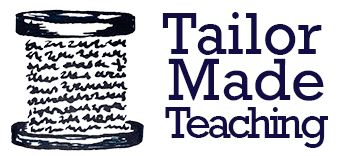EAP: Overcoming Common Issues with Formatting References and Citations
in EAP - English for Academic Purposes, TeachingFormatting references and citations correctly is a crucial skill for EAP students, yet many find it challenging to remember the proper formats. In this post, we will explore common issues students face with referencing and citations and provide an outline for a lesson activity designed to help reinforce these skills using multi-modal strategies.
Study Strategies
in EAP - English for Academic Purposes, Learner Autonomy, TeachingDeveloping “learner autonomy” has been a crucial element of TEFL for at least as long as I’ve been teaching, so it’s interesting to see what seems to be a growing interest in study strategies from students, on social media and in classes. Read more
EAP Tutorials
in EAP - English for Academic Purposes, TeachingOne of the topics I’m really interested in at the moment is tutorials, not just in EAP but in any class that is not one-to-one. In one-to-one classes, which are created to address an individual student’s needs, discussing progress, addressing areas of difficulty, talking about goals and aspirations, and finding methods that work for a particular student are all interwoven within each class. After teaching one-to-ones for a while, you begin to appreciate the difficulties involved in bringing that individual attention to each student in larger classes (although, larger classes offer many other benefits for students, and teachers). If organised well, tutorials should offer students in larger classes some of the one-to-one attention lacking. Read more
CPD: Trinity Cert PT in EAP
in CPD - Continuing Professional Development, EAP - English for Academic Purposes, TeachingThe Trinity Cert PT
I’d never heard of a Cert PT before finding this course. It is the Trinity Certificate for Practising Teachers. It’s a level 6 qualification, which places it between the CELTA (level 5) and DELTA (level 7). As I understand it, it is possible to take a Cert PT in different specialisations e.g. Young Learners, Online Teaching, Business English etc. However, I am told that the certificates awarded don’t actually name the specialism, which seems odd. Read more
Root Words and Meaning A – Z
in EAP - English for Academic Purposes, ESP - English for Specific Purposes, Learner Autonomy, Vocabulary acquisition, Word creationList of blog posts on root words from Latin and Greek and their meanings. Read more
Vocabulary Profiling 2
in Cambridge Exams, EAP - English for Academic Purposes, ESP - English for Specific Purposes, IELTS exam, Vocabulary acquisition, WritingHave a look at ‘Vocabulary Profiling 1‘ for reasons to profile vocabulary.
LexTutor is a little less user-friendly than VocabKitchen (you may not want students to try it themselves) but offers some additional features. Read more
Vocabulary Profiling 1
in Cambridge Exams, EAP - English for Academic Purposes, ESP - English for Specific Purposes, IELTS exam, Reading, Vocabulary acquisition, WritingTeaching Effective Thinking: Game – Devil’s Advocate
in EAP - English for Academic Purposes, Effective ThinkingThis is a good activity for critical thinking, it helps when practicing or reviewing discussion language. You will need cards with discussion expressions on them. In a previous activity you could get students to classify these according to function (see below). Read more
Teaching Effective Thinking: Games – The Brick Test
in Creative Thinking, EAP - English for Academic Purposes, Effective Thinking, WarmersThis is probably the most well-known ‘creative thinking’ activity. You may know it as ‘The Alternative Uses Test’. Show the class a brick and ask them to think of ways in which it can be used. They need to come up with as many ideas as they can in, say, 5 minutes. There are no bad ideas. You could brainstorm in a tradition, whole class way, or use a brainwriting technique (see last blog post). Read more










